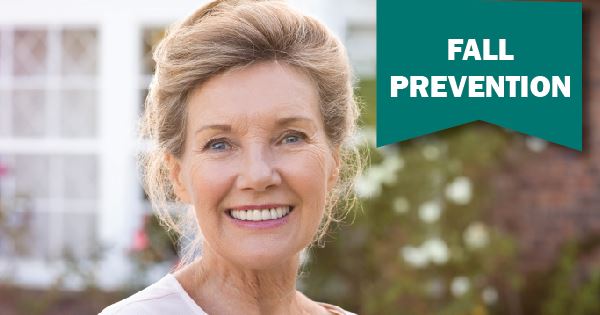
Staying Safe at Home: Fall Prevention
“For the elderly, a fall can be scary and extremely painful. It can also take away their ability to function on their own, or worse, it can even be deadly. A few fix-ups around your home can help you stay put and stay independent.”
Many things in life get better with age. Unfortunately, vision isn’t one of them. According to the American Academy of Ophthalmology, as you age, you are at higher risk of developing age-related eye diseases and conditions that can affect your vision. Falls are the leading cause of injury and death for people over 65, and poor vision is one cause.
One in three older Americans falls each year, and every 18 seconds an older adult is treated in an emergency room for falling-related injuries. The elderly and people with serious illnesses have certain risk factors for falling. Their eyesight, balance and strength aren’t as good as they once were. Their medications may make them weak or dizzy or blur their vision. Pain may cause them to move in an awkward or unsteady way.
But falls don’t have to happen. There are many things you can do to help prevent falls in your own home. Small changes can make a huge difference. Here’s a short list of potential safety hazards. Think of them as falls waiting to happen. Correct as many as you can. (Some fixes may require the work of a handyman.)
Lighting: Are hallways, stairs and other traffic areas well-lit? Replace any dim or burned-out bulbs. Use nightlights.
Pathways: Are traffic areas clear? Remove obstacles, including furniture, electrical cords, loose rugs and any clutter.
Handrails: Are there hand railings on both sides of stairways? Grab bars by the bathtub/shower and toilet?
Slippery areas: On stairs, use non-skid treads; mark edges with reflective tape. On smooth floors, use double-sided tape under area rugs; avoid waxes. In bathtubs, use non-skid strips.
Storage: Store often-used items at waist level.
Pets. House pets are a frequent cause of falls. Prod the floor before stepping down and gently nudge Fido or Princess Sophia Kitty out of the way.
Have Your Vision Checked
Our friendly Ophthalmologist, Dr. Bradley J Anderson, suggests that at age 40, everyone should have a baseline comprehensive dilated eye exam, followed by regular exams every 2 to 4 years, and then every 1 to 2 years at age 60. “This will allow your doctor to check for cataracts, as well as other often unnoticed vision disorders like dry eye, age related macular degeneration, and glaucoma,” Dr. Anderson says.
Dr. Anderson’s scope of practice includes treatment for diseases of the eye, and he also specializes in performing state-of-the-art cataract and LASIK surgery, plastic surgery on droopy eyelids, and medical retina.
He welcomes patients in Blackfoot. To schedule an appointment, please call: (208) 785-3800. Se habla Español
Return to Articles


